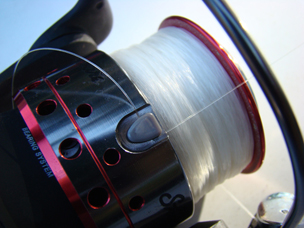What’s My Line?
By Andy Whitcomb
May 16, 2015
When I was young, my two or three rod and reels combos all had the same line: 8 pound monofilament.
When I was young, my two or three rod and reels combos all had the same line: 8 pound monofilament. Monofilament was the workhorse for anglers everywhere for anything that swims. Today however, my rod and reel collection has grown to double digits with specific line types and sizes to match.
.jpg)
Why does remembering your line matter?
It has been a long winter and when getting reacquainted with your reels, the differences in each line appearance may be subtle. Line companies have developed new forms, materials, and colors. Remembering and utilizing these lines under the right conditions can be very affective. Plus, if you didn’t re-spool your reels, old line weakens and can cost you a whopper.


For example,fluorocarbon line has that transparent look like monofilament but it is stiffer and sinks faster. In general, it is more expensive than monofilament and as often used as a leader while casting braided line.
Braid “superline” has a distinctive look, feel, and sound when it slides through the rod guides while cranking in a big fish. This line has no memory, which means it does not try to remain in the tight loops it was on the reel. Translation: it casts further. It also does not stretch, allowing for immediate hook set and it does a great job of cutting through heavy vegetation.
Other superlines, such as Fireline, also lack memory and are smoother casting than braid. Fireline is much thinner in diameter than traditional monofilament. Filling a spinning reel may involve monofilament backing first. Another great feature about the superlines is that they are long lasting.
Here are some tips for keeping track of the lines on your reels:
-
Always follow the recommendation printed on the rod/reel for line selection or weight.
-
Professional anglers have so many rods and reels that they use stickers or write info with sharpies on the bottom of rod butts to identify line type, weight, and date loaded.
-
In general, my older reels are loaded with basic monofilament for fishing situations with fewer casts, such as when using bait. My newer reels get the fluorocarbon and superlines so that I can cover more water with lures making long, smooth casts.
How many line types do you have? And how do you keep track? Share your best practices by commenting on this post in our Facebook page: www.facebook.com/TakeMeFishing









